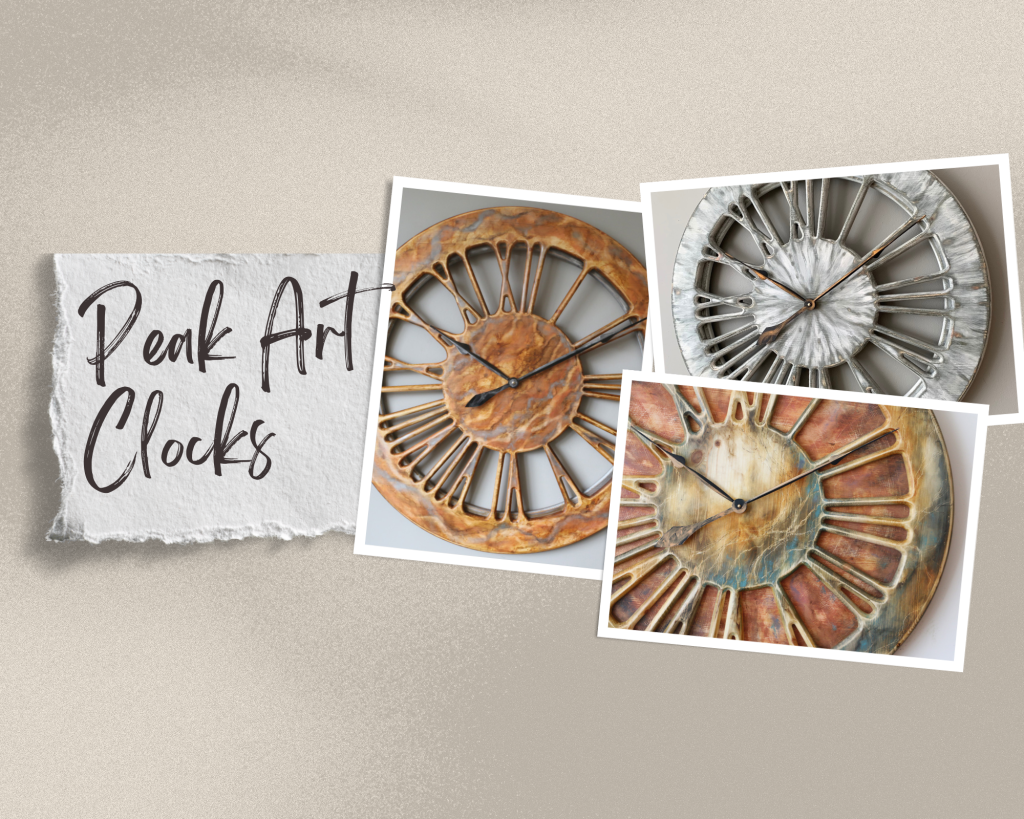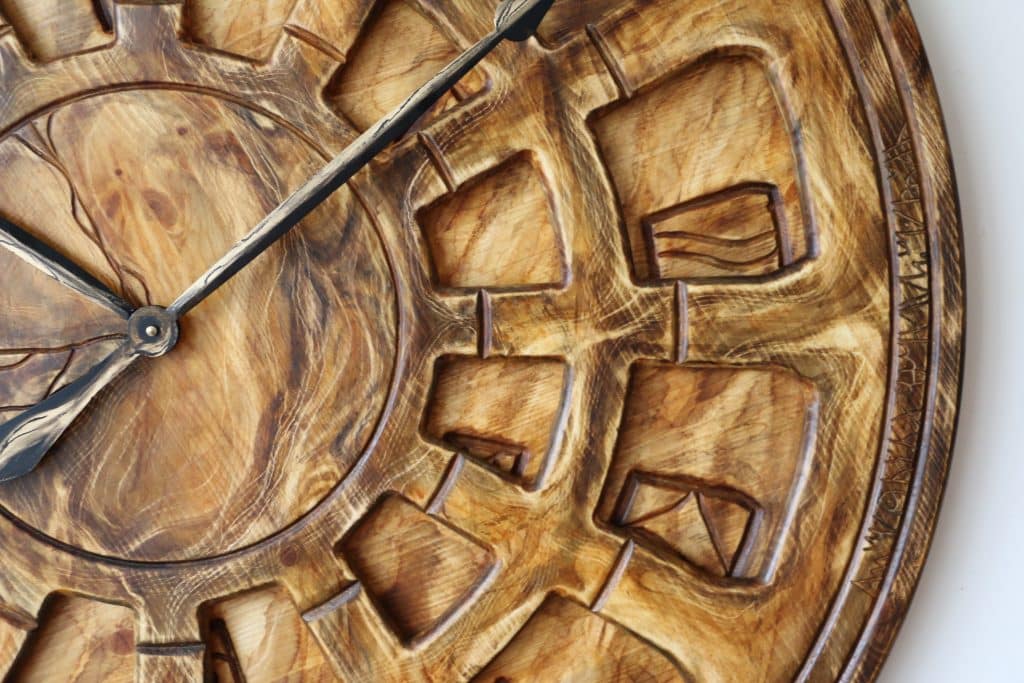Time to Shine: How Large Decorative Clocks Transform Your Space into a Timeless Masterpiece
Time often feels like a fleeting concept, but what if you could capture its essence while enhancing your home’s aesthetic? Enter large decorative clocks, the unsung heroes of interior design. These stunning timepieces serve as more than just functional additions; they are captivating art pieces that command attention and spark conversation. Imagine walking into a room transformed by a beautifully crafted clock, standing out as a statement piece that radiates elegance and character. From rustic farmhouse styles to sleek modern designs, large decorative clocks offer endless versatility, making them perfect for any decor. In this article, we’ll explore how these magnificent timekeepers not only help you keep track of time but also enrich your space, turning mundane walls into timeless masterpieces. Discover how to select the perfect clock that reflects your style and accentuates your home, creating an inviting atmosphere that welcomes both family and guests. Embrace the artistry of timekeeping and let your space shine.
The Art of Timekeeping: A Brief History of Decorative Clocks
The history of decorative clocks dates back centuries, with the earliest timekeeping devices tracing their origins to ancient civilizations. Sundials, one of the earliest forms, were used by the Egyptians and Greeks to measure time based on the position of the sun. These rudimentary devices laid the groundwork for more sophisticated timekeeping mechanisms. By the Middle Ages, the invention of the mechanical clock marked a significant evolution in horology. The grandeur of these early clocks was often showcased in public spaces and cathedrals, where they served both a functional and decorative purpose. Ornate and intricate, these masterpieces were a testament to the craftsmanship and technological prowess of their time.
As timekeeping technology advanced, so did the design and aesthetics of clocks. During the Renaissance, the artistry of clockmaking reached new heights. Clocks became more than just instruments to measure time; they transformed into symbols of wealth and status. Wealthy patrons commissioned bespoke timepieces adorned with precious metals, intricate engravings, and elaborate sculptures. These clocks were often the focal points of grand estates and palaces, reflecting the opulence and sophistication of their owners. The Baroque and Rococo periods further emphasized the decorative aspect of clocks, with designs featuring elaborate curves, gilded details, and rich ornamentation.
The Industrial Revolution brought about a democratization of clock ownership, making timepieces accessible to the broader public. The mass production of clocks allowed for greater variety in design and style, catering to different tastes and preferences. The Art Nouveau and Art Deco movements of the late 19th and early 20th centuries introduced sleek and modern aesthetics to clock design. These styles emphasized clean lines, geometric shapes, and innovative use of materials, reflecting the spirit of their respective eras. Today, large decorative clocks continue to evolve, blending traditional craftsmanship with contemporary design elements. They remain timeless pieces that seamlessly integrate into various interior styles, from rustic farmhouse to minimalist modern.
Why Large Clocks are a Statement Piece in Home Decor
Large decorative clocks hold a unique position in the realm of home decor, serving as both functional timepieces and striking statement pieces. Their substantial size immediately draws the eye, making them natural focal points in any room. Unlike smaller decorative items that may go unnoticed, a large clock commands attention and imbues the space with a sense of grandeur and sophistication. The sheer presence of a well-designed clock can transform an otherwise mundane wall into a captivating tableau, enhancing the overall aesthetic of the room.
One of the primary reasons large clocks make such impactful statement pieces is their versatility in design. From vintage-inspired pieces with distressed finishes to sleek, contemporary designs featuring minimalist aesthetics, there is a large decorative clock to suit every style preference. For instance, a clock with a weathered wooden frame and Roman numerals can evoke a sense of rustic charm, perfect for a farmhouse-inspired living room. On the other hand, a clock with a polished metal frame and clean lines can complement a modern or industrial space, adding a touch of sophistication and elegance. The wide range of available styles ensures that homeowners can find a clock that not only fits their decor but also enhances their overall design vision.

Moreover, large clocks have the unique ability to balance and anchor a room. In interior design, creating balance is crucial to achieving a harmonious and visually appealing space. A large clock can serve as an anchor point, providing a central element around which other decor items can be arranged. This helps to create a cohesive and well-organized design layout. For example, placing a large clock above a mantelpiece or sofa can create a sense of symmetry and balance, drawing the eye upward and giving the room a more structured feel. Additionally, large clocks can help to fill empty wall space in larger rooms, preventing the area from feeling sparse or unfinished. By thoughtfully incorporating a large decorative clock into your decor, you can elevate your space and create a timeless masterpiece that blends form and function.
The Role of Color and Material in Clock Design
The color and material of a large decorative clock play a significant role in its overall impact and how it integrates into your home decor. These elements not only influence the clock’s aesthetic appeal but also affect the mood and atmosphere of the room. Selecting the right color and material can enhance the clock’s visual presence and ensure it complements your existing decor.
Color is a powerful tool in design, capable of evoking emotions and setting the tone for a space. When choosing a large decorative clock, consider how its color will interact with your room’s palette. A clock in a bold, contrasting color can serve as a dynamic focal point, drawing attention and adding a pop of visual interest. For example, a bright red or deep blue clock can create a striking contrast against neutral walls, injecting energy and vibrancy into the room. Conversely, a clock in a complementary or analogous color can blend seamlessly with your decor, creating a more harmonious and cohesive look. Neutral-colored clocks, such as those in shades of white, black, or grey, offer timeless elegance and versatility, making them suitable for various design styles.
Material choice is equally important in defining the clock’s aesthetic and tactile qualities. Different materials convey different design sensibilities and can significantly influence the overall feel of the space. Wooden clocks, for instance, evoke warmth and rustic charm. They are perfect for creating a cozy, inviting atmosphere in rooms with farmhouse, cottage, or traditional decor. Clocks made from reclaimed wood or featuring distressed finishes can add a touch of vintage appeal, infusing the space with character and history.
Metal clocks, on the other hand, exude a sense of modernity and sophistication. Sleek, polished metal frames are ideal for contemporary and industrial interiors, where clean lines and minimalist aesthetics reign supreme. Metals such as stainless steel, brass, or copper can add a touch of luxury and elegance, enhancing the room’s overall refinement. Additionally, metal clocks with intricate detailing or unique textures can introduce an element of artistry and craftsmanship.
For those seeking a blend of traditional and modern elements, clocks made from mixed materials offer a versatile option. Combining wood and metal, for example, can result in a design that balances rustic warmth with industrial chic. Glass and acrylic materials can also be used to create clocks with a sleek, transparent quality, adding a sense of lightness and modernity to the space. By carefully considering the color and material of your clock, you can ensure it not only stands out as a statement piece but also harmonizes with your overall decor, creating a timeless masterpiece.
The Emotional and Psychological Impact of Clocks in Home Design
The presence of a large decorative wall clock in a home extends beyond its aesthetic appeal; it also has a profound emotional and psychological impact on the inhabitants. The concept of time is deeply ingrained in human consciousness, and timekeeping devices like clocks serve as constant reminders of its passage. This awareness can influence our mood, behavior, and overall sense of well-being. Incorporating a thoughtfully designed clock into your home decor can enhance the ambiance and create a more inviting and comforting environment.
One of the key emotional impacts of clocks is their ability to evoke a sense of nostalgia and connection to the past. Clocks with vintage or antique designs can transport us to a different era, triggering memories and sentiments associated with that time. For example, a large grandfather clock with its majestic presence and rhythmic ticking can evoke a sense of tradition and continuity, reminiscent of bygone days spent in the company of family and loved ones. This connection to the past can create a comforting and grounding effect, making the home feel more familiar and secure.
Clocks also play a role in creating a sense of order and structure within the home. The regularity and predictability of a clock’s ticking provide a rhythmic backdrop to daily life, reinforcing routines and helping to establish a sense of stability. This can be particularly beneficial in promoting a calm and organized living environment. In spaces dedicated to productivity, such as home offices or study areas, a well-placed clock can serve as a gentle reminder to manage time effectively, fostering a sense of discipline and focus. The visual presence of the clock can also act as a motivational tool, encouraging punctuality and time management.

On a psychological level, the design and aesthetics of a clock can influence our mood and emotions. Clocks with soothing and harmonious designs can create a serene and tranquil atmosphere, promoting relaxation and reducing stress. For instance, a clock with a soft color palette, flowing lines, and natural materials can evoke a sense of calm and well-being. Conversely, a clock with bold and dynamic design elements can inject energy and excitement into the room, stimulating creativity and enthusiasm. The choice of clock design should align with the intended mood and function of the space, enhancing the overall emotional and psychological experience of the inhabitants.
In summary, the emotional and psychological impact of clocks in home design is multifaceted, encompassing elements of nostalgia, order, and mood enhancement. By carefully selecting a large decorative clock that resonates with your personal style and aligns with the desired ambiance of your home, you can create a space that is not only visually stunning but also emotionally enriching and psychologically supportive.
Conclusion: Elevate Your Space with a Timeless Decorative Clock
In the world of interior design, the importance of incorporating unique and meaningful elements cannot be overstated. Large decorative clocks offer a perfect blend of functionality and artistry, serving as both practical timekeeping devices and captivating statement pieces. Their ability to transform a space into a timeless masterpiece is undeniable, as they draw the eye, evoke emotions, and create a sense of harmony and balance within the room.
From their rich historical origins to their diverse range of styles and designs, large decorative clocks have proven to be enduring symbols of craftsmanship and innovation. Whether you prefer the rustic charm of a wooden farmhouse clock, the sleek elegance of a modern metal design, or the intricate detailing of a vintage-inspired timepiece, there is a clock to suit every taste and decor style. The thoughtful selection of color and material further enhances the clock’s impact, ensuring it complements your existing decor and contributes to the overall aesthetic of the space.
Beyond their visual appeal, clocks have a profound emotional and psychological impact on the inhabitants of a home. They evoke a sense of nostalgia, create order and structure, and influence mood and behavior. By integrating a large decorative clock into your home design, you can create an environment that is not only visually stunning but also emotionally enriching and supportive of your well-being.

